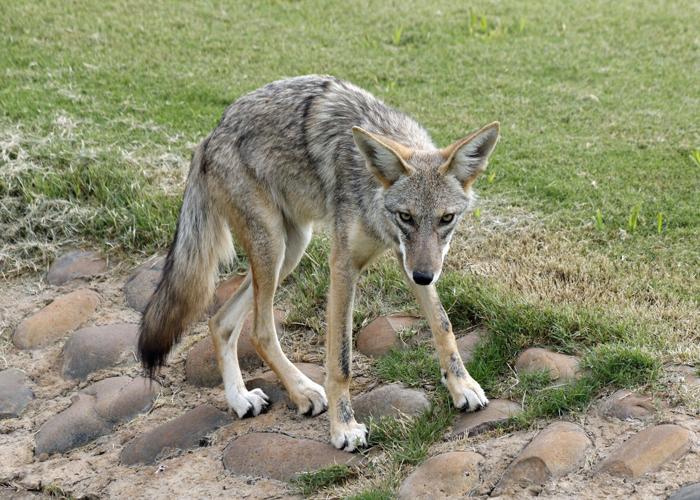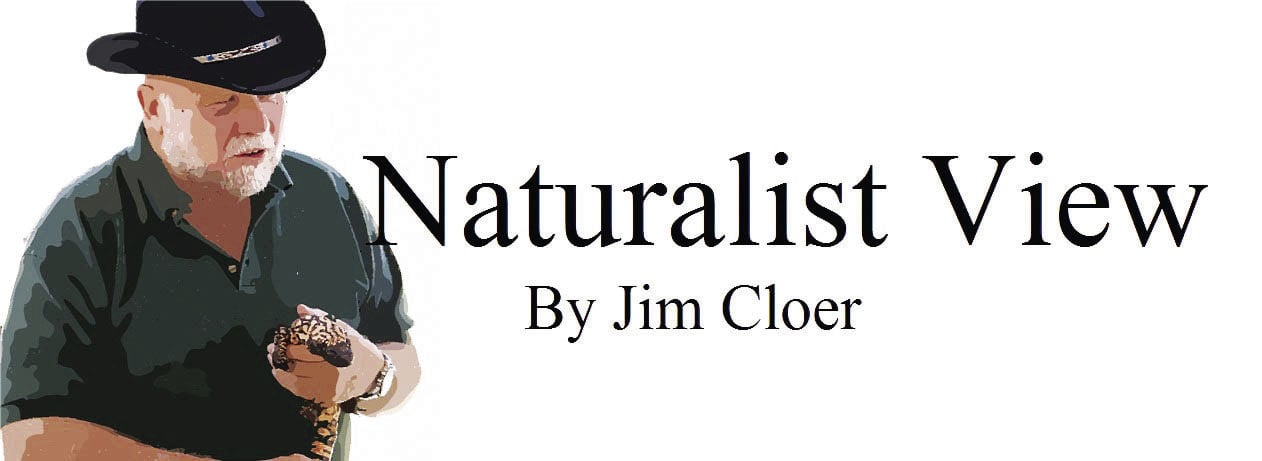Over the years, I have met far too many SaddleBrooke residents that have lost their much loved pets to a predator. Even though a resident was in the yard with his dog and had the patio lights on, a dark shadow leapt over the wall and made off with their pet. It rained that night and by the next day I could find no sign of tracks. Most likely it was a coyote or bobcat which had become accustomed to the neighborhood and was waiting for an opportunity for an easy meal.
Be good neighbors to your wildlife. While feeding the animals can be fun for humans, it is usually detrimental for the animals, and will harm them more than it helps them. The following information will explain this more thoroughly: Keep in mind that we have chosen to live in a wildlife habitat, which displaces some animals, while also providing attractive habitats for others. We as humans have created this potential problem.
DO NOT feed wildlife! Keep wildlife healthy and wild!Here's Some Helpful Tips:
• Do not intentionally feed wildlife; animals quickly associate food with humans.
• Feed pets indoors or remove leftover food immediately.
• Store all garbage securely. Do not discard edible garbage where javelina, skunks, coyotes and other wild animals can get to it.
• Keep bird seed and water off the ground and out of reach of wild animals. A platform can be attached to the bottom of most feeders to catch spilled seed. Or better yet, plant native vegetation that will provide seeds native wildlife can utilize.
• Fencing your garden may be necessary to keep out animals such as javelina and rabbits. Remember, prey species such as rabbits and javelina can attract predators such as mountain lions, coyotes and bobcats.
Other points to consider:
- When wild animals begin to depend on humans for food, their foraging skills may be diminished. When young wild animals are taught to depend on humans for food, they may become less experienced at foraging and consequently less likely to survive.
- Wild animals that are used to being fed by humans commonly lose their fear of people. Animals that are unafraid of people will approach them for food, and are sometimes mistaken as rabid and killed. An instinctive wariness of people is important to a wild animal's survival.
- The food fed to animals by humans is inadequate nutritionally and can cause serious health problems for the animals. Most humans will feed wildlife food that they have in their homes which bears no resemblance to what the animals eat in the wild.
- Animals are opportunistic and will go for the most convenient food source available. When food is readily available, animals will gather in abnormally large numbers. This means that if one animal in the group has an illness or disease, it can spread throughout the group.
- Reproduction rates may also be affected when an artificial food source is readily available. In the wild, the number of animals being born is often directly related to the amount of natural food available. This is nature's way of keeping a balance and making sure there are not too many animals in one area.
- Feeding migratory animals such as hummingbirds can interfere with the animal's awareness of seasonal changes in natural food supplies which tell the animal that it is time to migrate!
There are other ways to enjoy wildlife without harming them. Planting native plants which are a natural food source will provide this opportunity. So please, help wildlife by enjoying them from a distance—their lives depend on it.
Even keeping a bird feeder has its difficulties. Although songbirds do not lose their instinctual fear of humans and the seeds provided are nutritionally beneficial, they are susceptible to diseases caused by dirty bird feeders. Feeders should be kept clean and disinfected with a mild bleach solution. The ground underneath the feeder should be raked to remove moldy grain and bird droppings because both can harbor disease and attract rats and mice as well as Javelinas.
I have seen Cooper’s hawks lurking near bird feeders. The predatory bird realizes the feeder is drawing in smaller birds and provides a gathering point. The hawk conserves energy by simply waiting and watching until an opportune moment, and then it imposes a death sentence on any unsuspecting birds. A few years back, I had a Bobcat that hung out under a bush near the bird feeder and lunched on doves that were unaware of her presence. As much as I enjoyed watching the bobcat, I moved the feeder to a safer location.
Our Nature Program at Catalina State Park is still closed due to the COVID-19 virus. However, we can still do small family group tours by arrangement. Also, we can do “Kids Digs” if you have young visitors here in SaddleBrooke.
For information call or email:
- Jim Cloer, (520) 818-3545, jcloer4243@gmail.com
- Jerry Schudda, (520) 235-6899, jschudda@gmail.com




